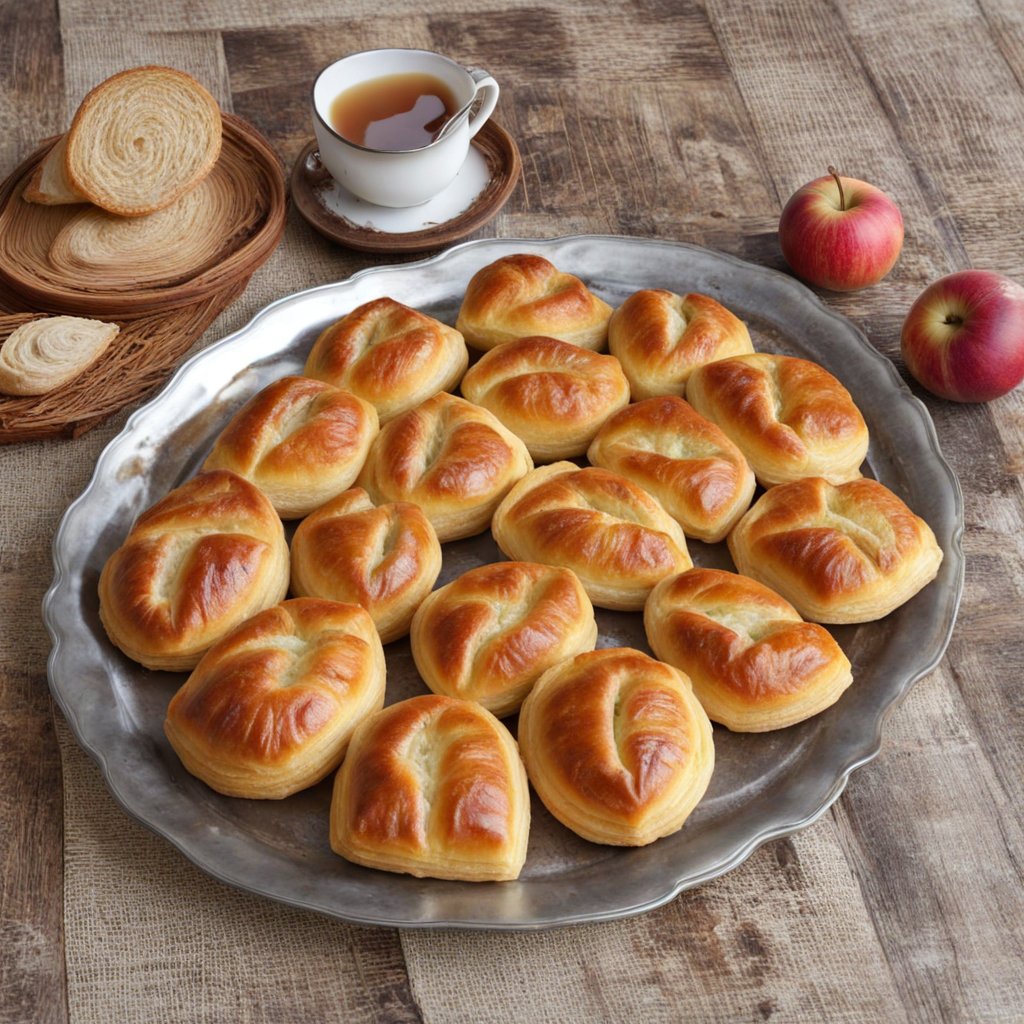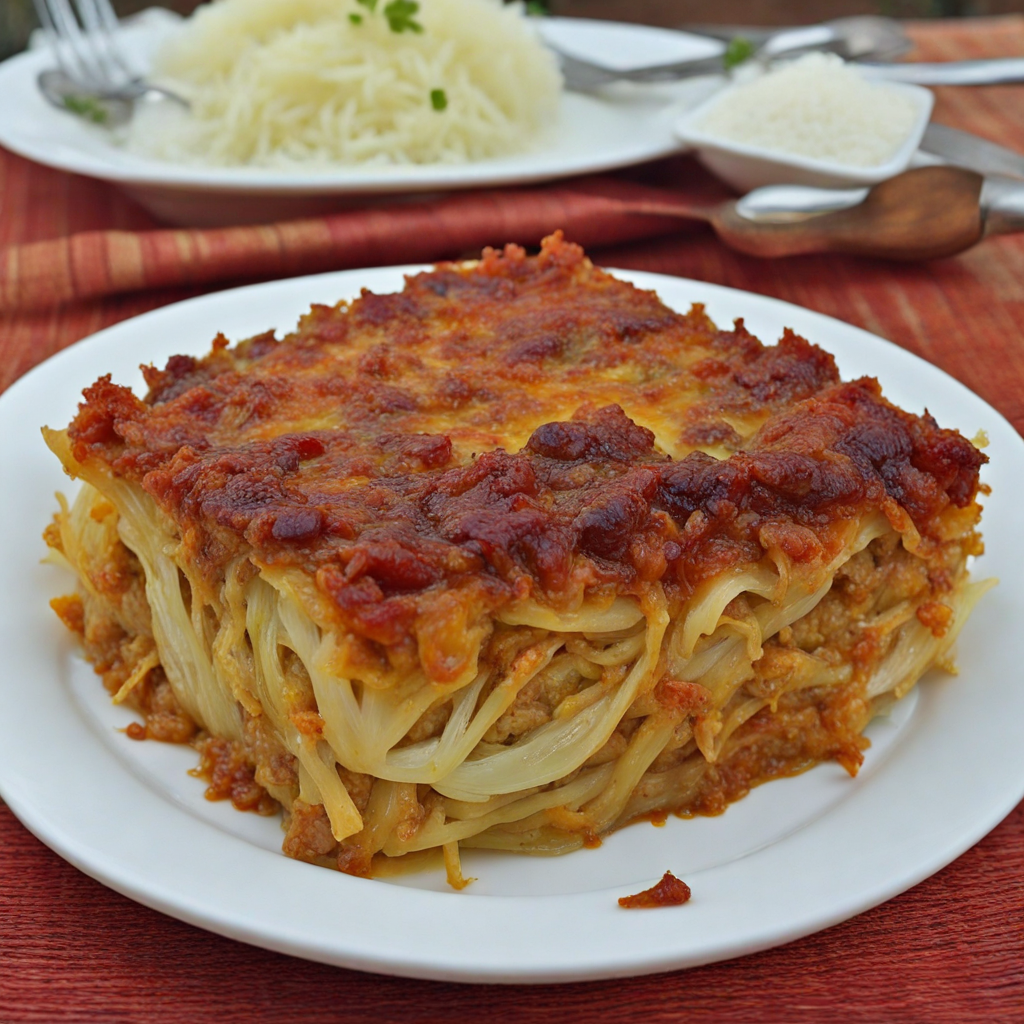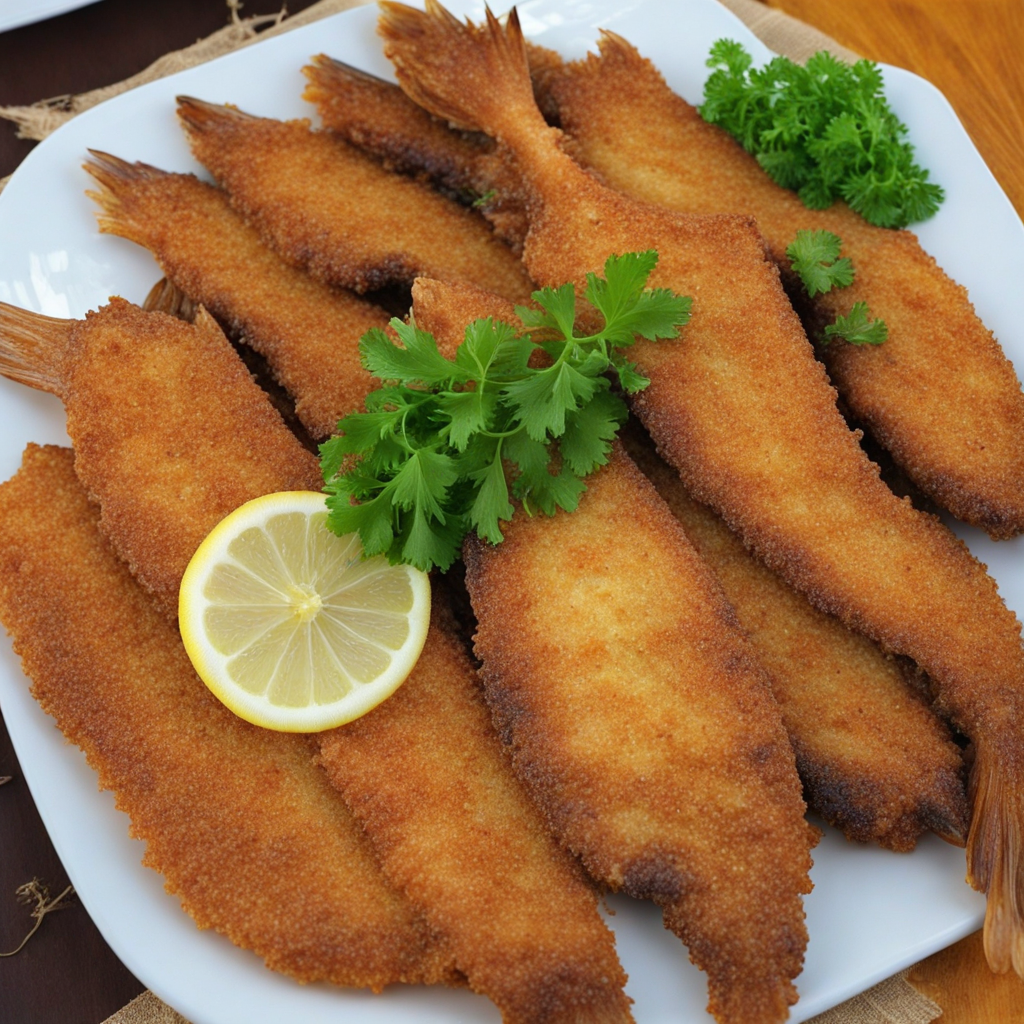Plăcintă
Plăcintă is a traditional Romanian pastry that beautifully blends flavors and textures, making it a delightful treat for those eager to explore new culinary experiences. At its core, plăcintă is a flaky, golden-brown pastry that can be either sweet or savory, depending on the filling. The dough is typically made from simple ingredients such as flour, water, and salt, creating a tender and crisp crust that envelops a variety of fillings. This versatility allows for endless possibilities, ranging from cheese and potato to apple and pumpkin, catering to both savory cravings and sweet tooth desires. The savory versions of plăcintă often feature a combination of ingredients like feta cheese, sautéed onions, and herbs, creating a rich and satisfying meal that can be enjoyed at any time of day. On the other hand, the sweet variants are commonly filled with fruits such as apples, cherries, or plums, often enhanced with cinnamon and sugar for an aromatic finish. Each bite of plăcintă offers a delightful contrast between the crisp exterior and the warm, flavorful filling, making it a comforting choice for both locals and visitors alike. Plăcintă is not only a staple in Romanian households but also a popular street food item, often enjoyed fresh from vendors at markets and festivals. It can be served warm or at room temperature, making it a convenient snack or meal option. Whether enjoyed as part of a festive gathering or as a casual street-side indulgence, plăcintă encapsulates the heart of Romanian culinary tradition, inviting taste explorers to savor the rich heritage and diverse flavors of this beloved dish.
How It Became This Dish
A Culinary Journey Through Plăcintă: The Heart of Romanian Cuisine #### Origins and Etymology Plăcintă, a traditional Romanian pastry, is more than just a dish; it is a symbol of the country's rich culinary heritage and cultural identity. The term "plăcintă" is derived from the Latin word "placenta," which means "cake" or "flat cake." This etymological link highlights the dish’s ancient roots, connecting it to the Roman culinary traditions that have influenced Romanian cuisine over centuries. Historically, plăcintă is believed to have originated in the rural communities of Romania, where it was prepared as a hearty meal or treat for both special occasions and daily sustenance. The concept of encasing filling within bread or pastry is not unique to Romania; indeed, many cultures have their variations of stuffed pastries. However, the Romanian interpretation, with its distinctive flavors and ingredients, has carved out a unique niche in the culinary landscape. #### Ingredients: A Reflection of Local Resources The beauty of plăcintă lies in its versatility. While the basic dough is typically made from flour, water, and a pinch of salt, the fillings can vary widely depending on the region, season, and available local ingredients. Common fillings include: 1. Cheese and Egg: A mixture of soft cheese, such as telemea, and eggs, which creates a savory filling that is both creamy and rich. 2. Potatoes: Mashed or grated, potatoes are often mixed with onions and herbs, offering a comforting and hearty option. 3. Pumpkin: Sweetened with sugar and flavored with cinnamon, pumpkin plăcintă is a beloved dessert variant, especially in the fall. 4. Cherries or Apples: These fruits are often used in sweet versions, cooked down with sugar and spices to create a luscious filling. The choice of filling often reflects the agricultural bounty of the region, making plăcintă a seasonal dish that celebrates local produce. Regions in Romania known for specific crops, like Transylvania with its rich orchards, have contributed to the diversity of plăcintă recipes. #### Cultural Significance Plăcintă is deeply embedded in Romanian culture, often associated with family gatherings, celebrations, and communal feasts. Traditionally, it is a dish that brings people together, symbolizing hospitality and the warmth of home. In rural communities, the preparation of plăcintă might involve the whole family, turning cooking into a communal activity filled with laughter and storytelling. During religious holidays, such as Easter and Christmas, plăcintă takes on special significance. Families prepare various types of plăcintă as part of their festive meals, making it a staple on holiday tables. The act of baking these pastries often carries a sense of tradition, with recipes passed down through generations, ensuring that the essence of Romanian heritage remains intact. In addition to its role in family and communal meals, plăcintă also finds its way into local markets and bakeries, where it is sold as a beloved street food. Vendors often serve warm plăcintă to passersby, offering a taste of home-cooked goodness that resonates with both locals and tourists alike. #### Evolution Through History The history of plăcintă is intertwined with the broader narrative of Romanian culinary evolution. Over the centuries, Romania has been influenced by various cultures, including the Ottoman Empire, Austro-Hungarian Empire, and Slavic neighbors. Each of these influences has contributed to the development of plăcintă, introducing new ingredients and cooking techniques. During the Ottoman period, for instance, the use of spices and the concept of layered pastries made their way into Romanian kitchens, enriching the flavor profiles of plăcintă. The introduction of sugar, which was once a luxury, allowed for the creation of sweeter versions that became popular among the nobility and the burgeoning middle class. In the 20th century, as Romania underwent significant political and social changes, so too did its food culture. The Communist regime imposed restrictions on certain ingredients and encouraged the use of local produce, leading to a resurgence of traditional recipes. Plăcintă became a symbol of resilience, with families finding creative ways to adapt their beloved dish to the constraints of the time. #### Modern Adaptations and Global Influence In recent years, plăcintă has experienced something of a renaissance, both in Romania and abroad. As globalization has led to increased interest in ethnic cuisines, Romanian chefs and home cooks alike have begun to experiment with plăcintă, incorporating international flavors and techniques. Fusion versions may feature fillings inspired by Mediterranean or Asian cuisines, reflecting the contemporary culinary landscape. Furthermore, as Romanian diaspora communities have spread across Europe and beyond, plăcintă has become a symbol of cultural pride and nostalgia. Many Romanians living abroad seek out authentic plăcintă, and some even hold community gatherings centered around its preparation, ensuring the legacy of this cherished dish continues. #### Conclusion: A Dish Beyond Borders Plăcintă encapsulates the essence of Romanian cooking: it is hearty, comforting, and steeped in tradition. Its evolution from a rural staple to a modern culinary delight showcases the adaptability of Romanian cuisine while honoring its roots. Today, plăcintă is more than just food; it is a testament to the resilience of cultural traditions and the enduring power of shared meals. As you savor a slice of plăcintă, whether sweet or savory, you are not just enjoying a delicious pastry; you are partaking in a rich history that connects generations of Romanians, embodying the spirit of community, celebration, and culinary artistry. Whether enjoyed at a family gathering, a festive holiday, or a bustling marketplace, plăcintă remains a beloved emblem of Romania’s culinary heritage, inviting all to share in its warmth and flavor.
You may like
Discover local flavors from Romania







